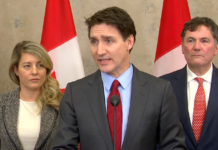How many people did you have at your Christmas gathering this year? Your kids, your parents, maybe some aunts, uncles and cousins?
If you were visiting with 10 or more family members, then the odds are pretty good that at least one of them was on some kind of a health care wait list.
SecondStreet.org just released the latest data on the number of Canadian patients waiting for surgery, a diagnostic scan, or to see a specialist. The data were mostly obtained through freedom of information requests with provincial governments across Canada.
While there were some bright spots in the data, unfortunately, the numbers have gone up.
When SecondStreet.org first started tracking these numbers in November 2022, there were almost three million Canadians on waitlists. That number has now risen by over 140,000 – a nearly 5% increase.
Let’s dive a bit deeper.
First, it’s important to note that many provinces don’t do a very good job of tracking this data or reporting it consistently. For instance, British Columbia could only provide data on the number of patients who were waiting for surgery. In Manitoba, it was positive to see the number of patients waiting for surgery or receive a diagnostic scan go down, but the prairie province only reports data from four types of surgeries and five types of diagnostic tests ‒ hardly a complete picture of what’s going on.
New Brunswick had previously provided some of the most complete data in the country, with figures on waits for surgery, diagnostic scans, and specialists. However, this time around, it only provided data on the surgical waitlist.
These holes in the data (along with a few more) led us to make some conservative estimates to fill in the gaps – the true number of Canadians waiting for health services is likely over 5.1 million.
That’s clearly not a good situation.
Think of the people behind those numbers. People like Allison Ducluzeau, a B.C. woman who was told she wouldn’t be able to get cancer treatment, and was instead offered assisted suicide. Or Dean Baker, an Ontario man who had to contact politicians and bring his story up in the media to get treatment for a life-saving brain tumor.
Not everyone waiting for care has a story as dramatic as those cases, but stories like theirs are becoming more common, and the sheer numbers show how bad the situation is.
It’s clear that Canadian health care is sick and in need of treatment. So what should the prescription be?
For one, Canadian law generally forbids patients from paying for surgery within their own province, with the exception of Quebec. In effect, this means patients have two options: wait for the public system to eventually provide care or travel somewhere else for treatment.
This isn’t right.
Governments could take a bold step and follow in the lead of every other developed country with a universal health care system and keep the public health system, but allow patients to choose private options. Sweden, Denmark, Australia… they all do it, and they all have better outcomes than Canada. Allowing patients to pay for care helps them get care more quickly, and it takes pressure off of the public system, making waits shorter for everyone else.
Provinces could also make travelling for care easier. The European Union has a policy called the Cross-Border Directive, where patients are allowed to go to another EU country for care, pay for it, then be reimbursed by their home government for up to what it would cost to have the procedure in their home country. This opens up a world of options for lower and middle income people. This option is also extremely popular with Canadians – a Leger poll commissioned by SecondStreet.org showed that 74% are in favour of their home province copying this policy.
Those are a couple of bold changes that could immediately help cut these gargantuan waitlist numbers, but there are certainly other options that could help as well.
No matter what, it’s clear that something needs to be done. Do you want to live in a modern, developed country where around 1 in 10 people are waiting for health care? Hopefully we see more in the way of health reform in 2024.
Dom Lucyk is the Communications Director with SecondStreet.org, a Canadian think tank.





















